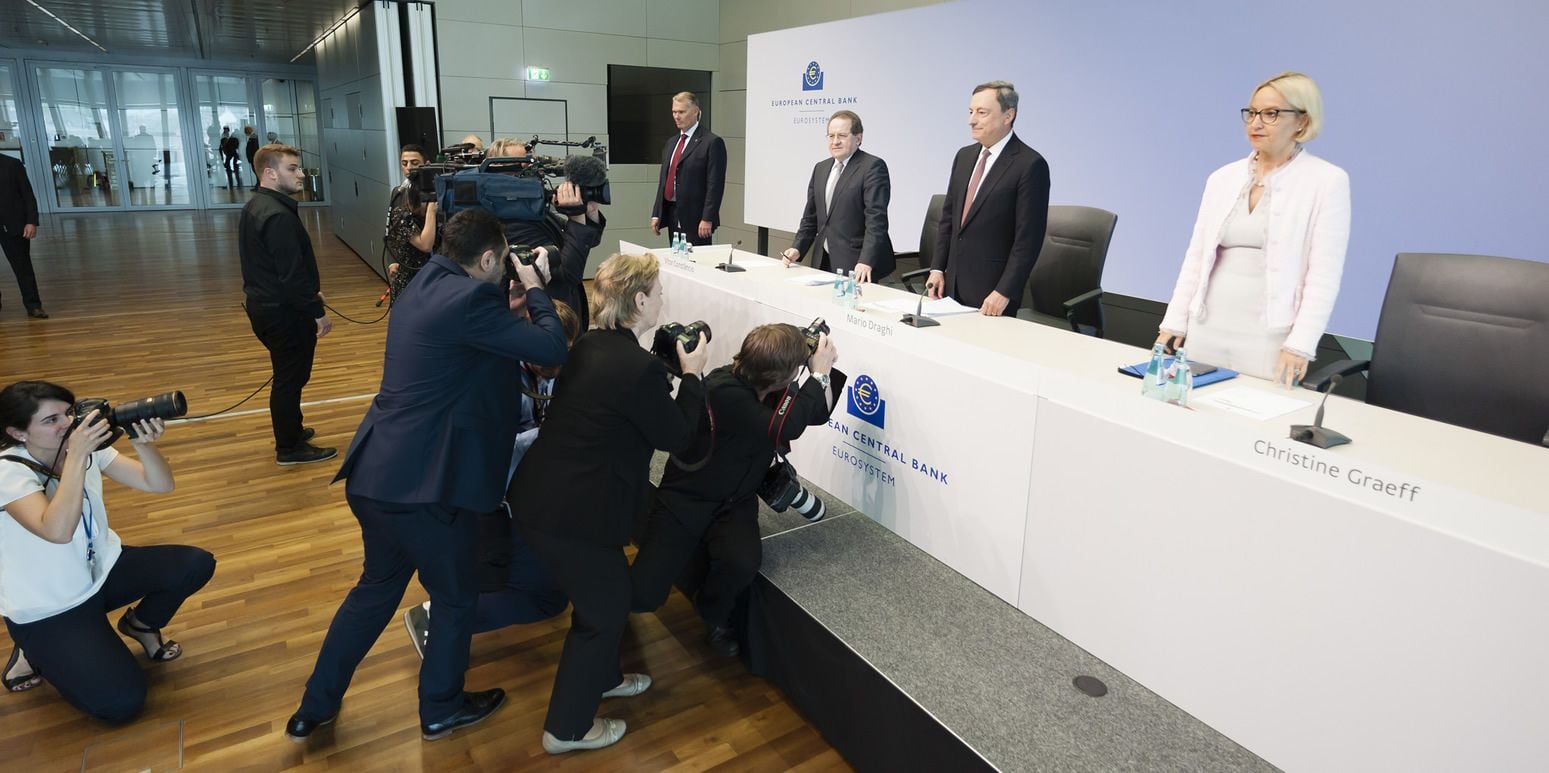"There's no Stopping the Euro Now": How High Can it go Against the British Pound?
- Written by: Gary Howes

- Pound to Euro exchange rate: 1 GBP = 1.1136 EUR
- Euro to Pound Sterling exchange rate: 1 EUR = 0.8973 GBP
Pound Sterling tests eight-month lows against the Euro once more amidst an environment of broad-based Euro strength and signs that little positive progress is being made in Brexit negotiations.
The single-currency strengthened notably following the European Central Bank's July policy event in which policy-makers were seen to be trying hard to calm a recent rally in Eurozone bond yields.
However, the ECB President Mario Draghi failed to criticise a strengthening Euro in his Q&A session with the press and we note that this is when the Euro took a notable step higher.
When questioned about the Euro's recent rise - and how in the past such moves have been unwelcome in the halls of the ECB - Draghi appeared nonchalant.
"It's true there have been movements in bond price, asset price, exchange rates and so on," noted Draghi, "but financing conditions remain supportive."
The question pertaining to the Euro's strength was one of the first asked in the Q&A session indicating that journalists saw it as important in the context of recent financial market action - Eurozone bond yields are on the rise and are squeezing the cost of funding higher.
Rising bond yields meanwhile entice a stronger Euro and if we could sum up 2017 thus far it would be that it is the year of the Euro.
The single currency has risen sharply against its G10 competitors as a sea-change in monetary policy in the Eurozone looms.
However, in the past the ECB would try and fight back against the rise in exchange rates and interest rates as it creates conditions counter to what policy-makers are trying to achieve.
That the Draghi dismissed the rise in the Euro cannot be understated within this context.
In essence, the central bank is OK with the currencies run higher; there is one potential barrier to further strength now removed.
Get up to 5% more foreign exchange by using a specialist provider. Get closer to the real market rate and avoid the gaping spreads charged by your bank for international payments. Learn more here.
Who’s Afraid of the Big Bad Draghi?

Above: ECB press conference, Frankfurt, July 20, 2017. © European Central Bank 2017.
Who's afraid of Mario Draghi? Not markets it would appear.
The ECB boss tried hard to put a lid on the rising cost of borrowing in the Eurozone - the yield on Eurozone-based debt (bonds) has been rising since his speech in Sintra, Portugal where he noted the Eurozone was reflating.
A rising cost of borrowing is exactly what the ECB is trying to avoid and explains why Draghi emphasised that a September taper announcement looks increasingly unlikely as the ECB said that a “very substantial degree of accommodation is needed” to boost inflation.
Such communication in the past would have sent the cost of Eurozone borrowing sharply lower, taking the Euro down too.
But not this time, so what’s going on?
It appears that markets just don’t believe the ECB and its President, largely because the Eurozone economy is firing quite nicely and inflation is on an upward path.
"While the central bank head said measures of underlying inflation remain low, he also indicated that core inflation will rise over the medium term as stimulus pass through supports demand and favourable financing conditions help investment," notes Kathy Lien, Director of BK Asset Management.
The ECB stressed that their quantitative easing programme will run until the inflation rate picks up but with core inflation starting to rise the market can clearly see what is on the horizon.
"There's no stopping the euro now that European Central Bank President Mario Draghi made it clear that his concerns for low inflation are limited," says Lien.
In short, markets can see through Draghi’s attempts to artificially quash yields and the Euro.
“We would not be very afraid of a dovish Draghi today. Near-term, the Euro will be the most sensitive to any pushback on the recent tightening in financial conditions and in particular the strength of the exchange rate. But even if this happens we would buy EUR/USD on any dips: simply put, the ECB may not have much choice but to accept a stronger Euro,” says George Sarvelos at Deutsche Bank in London.
Saravelos has argued for a few weeks now that the ECB will not be able to stop market forces - the economy is growing and it demands a stronger currency.
City Index’s Kathleen Brooks notes that there was not enough new substance to convince traders they need to now bet against the Euro's upward trend:
“This meeting’s message is very similar to the last one, and no news means no change in trend. Draghi’s tolerance of the stronger Euro is also helping the single currency.”
In the past the ECB has shown a nervousness about the Euro becoming too strong, lest it work against the ECB’s agenda of boosting the Eurozone economy. After all, a stronger Euro makes for more expensive European exports.
Forecast Targets for the Pound v Euro
So it’s full steam ahead for the single currency it would appear.
Of late we have noted a number of analysts upgrade their forecasts for the Euro with HSBC saying they see EUR/USD striking 1.20 by the end of 2017 and EUR/GBP racing towards parity.
If HSBC are right, this will put a massive strain on those who import from Europe, so I would suggest you get cracking with securing your hedges.
We do note a good amount of year-end forecasts for EUR/GBP do however reside in the 1.11 area where strong support lies and for now we would not be panicked by the 1.0 forecast, yet.
Viraj Patel at ING Bank N.V says that while GBP/USD sub-1.30 seems about right, EUR/GBP looks set for a near-term test of the psychologically important 0.90 level.
“Risks are that we stay above there,” says the analyst.
EUR/GBP at 0.90 equals a Pound to Euro exchange rate at 1.11.
Analysts at JP Morgan have this month upgraded their forecasts for the Euro exchange rate complex and see now see EUR/USD rising to 1.15 (Q3), which is more in line with previous medium term forecast.
They have also raised their 2017 Q4 forecast to 1.16.
In Q1 2018 they expect the pair to hit 1.15 and then 1.18 in June.
The EUR/GBP exchange rate is seen rising to 0.89 by the end of the third-quarter and to 0.90 by the end of 2017, up from 0.8783 currently.
This is a Pound to Euro exchange rate of 1.1236 and 1.1111.
One way or another the answer in this whole equation rests with whether or not the ECB does announce a taper of its asset purchases in September and the key to this outcome will be upcoming inflation releases.




